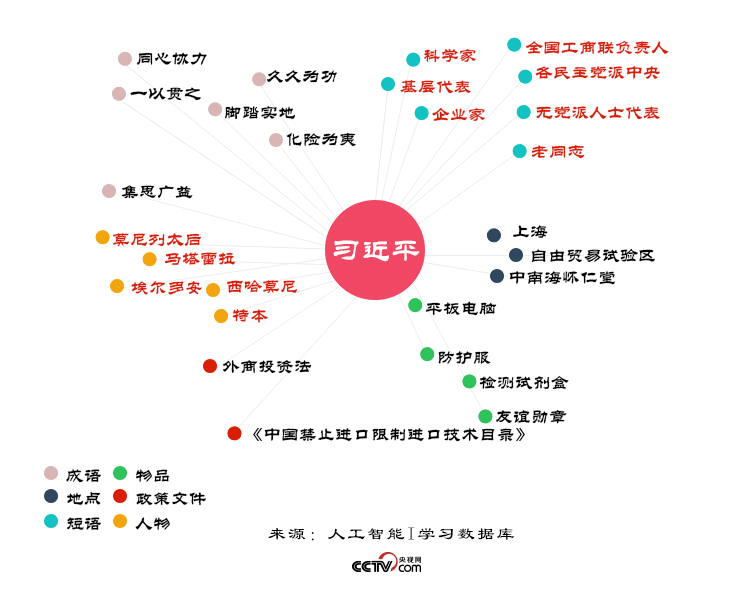On behalf of the Committee members, there is a heated discussion on graded diagnosis and treatment: how to "divide" who will "diagnose"

On March 10th, Chinese People’s Political Consultative Conference members Ge Junbo, Zhang Shu and Huo Yong (from left to right) from the medical and health sector jointly discussed how to improve the multi-level medical security system and promote the open sharing of health care big data, and made suggestions for "accelerating the construction of a healthy China". Our reporter is happy and expensive.
"Graded diagnosis and treatment" is the first basic medical system with characteristics in China, and it is also one of the hot words in this year’s National People’s Congress. This year’s government work report proposes to expand the grading diagnosis and treatment pilot and family contract service to more than 85% cities. The deputies put forward their own views on how to scientifically and reasonably "divide" the graded diagnosis and treatment and how to "diagnose" it in time and accurately.
Strengthen the medical association
"The cost of going to a big hospital for a minor illness is high, and a serious illness cannot be cured in a small hospital." Hu Wanning, member of Chinese People’s Political Consultative Conference and president of Tangshan People’s Hospital, said that graded diagnosis and treatment is a model of classifying and resolving diseases and treating different diseases in different hospitals in order to solve the difficulty of seeing a doctor, and the medical association is a platform and an important starting point for graded diagnosis and treatment.
The medical association with Tangshan People’s Hospital as its core has signed contracts with more than 30 secondary hospitals, and will expand its coverage to all community and township hospitals in the region in the next step. "Whether large hospitals can be divided and whether primary hospitals can accept them are two major problems to be solved in graded diagnosis and treatment." Member Hu Wanning suggested: First of all, graded diagnosis and treatment should carefully classify diseases, such as acute diseases treated nearby, and chronic diseases given different medical guidance according to their priorities; Secondly, it is necessary to break the information island between hospitals through the interconnected network platform, so that the superior hospital of the medical association can see the medical records and patient data of the lower hospitals, and vice versa, providing guarantee for consultation and two-way referral.
Commissioner Hu Wanning, for example, said that an elderly man in his 90 s suddenly suffered from intestinal perforation and coma. After online consultation, experts suggested that he be transferred to Tangshan People’s Hospital, and then transferred back to the county hospital for further treatment after the old man finished the operation.
After the establishment of the medical association, the number of critically ill patients and difficult patients transferred from lower-level hospitals began to increase. The patients in the Department of Critical Care Medicine of Tangshan People’s Hospital developed from dissatisfaction to inability to live, and the role of tertiary hospitals became more prominent.
A third-class hospital, a number of primary hospitals, and Internet means are the common models of medical associations. Wang Yonghong, deputy to the National People’s Congress and director of the Jiangsu Provincial Health Planning Commission, told reporters that there are 187 medical associations in Jiangsu Province, and all grass-roots hospitals have established a green channel for two-way referral with higher-level hospitals. At present, the number of grass-roots medical visits has accounted for 60%. This year, the proportion of grass-roots medical visits will be further increased by 3 percentage points by promoting graded diagnosis and treatment.
In the view of Commissioner Hu Wanning, the greatest function of "Internet+medical care" is to directly improve the technical level of primary medical care. "This is far more effective than sending a few specialists to sit in the clinic." Commissioner Hu Wanning said, "What the grassroots really need is a large number of general practitioners." This statement was recognized by Cai Xiujun, member of Chinese People’s Political Consultative Conference and president of sir run run shaw hospital.
Committee member Cai Xiujun showed the Shao Medical Cloud platform on the mobile phone to the reporter. "I can call up the patient’s medical records and imaging data and decide whether the patient needs to be referred." At present, there are more than 5,500 contracted doctors on the Shao Medical Cloud platform based on the medical association, which can immediately send consultation requests or respond to demands.
"Doctors are a valuable resource. We should give full play to their enthusiasm through the reform of the personnel system and push them to the society effectively." Commissioner Cai Xiujun suggested.
Find a breakthrough
"From a practical point of view, there are cases in which patients go to large hospitals blindly, and there are also cases in which county hospitals have insufficient motivation and intention to transfer patients abroad." Commissioner Hu Wanning said that only by rationally diverting patients can more and more patients go to primary hospitals to see common diseases and the medical efficiency of tertiary hospitals become higher and higher.
Member Hu Wanning also pointed out that there are still some problems in promoting graded diagnosis and treatment, such as low enthusiasm of primary hospitals and medical associations only paying attention to form.
"To promote graded diagnosis and treatment, the first thing is to mobilize the enthusiasm of primary medical institutions." Wu Ming, member of Chinese People’s Political Consultative Conference, professor of the Department of Health Policy and Management of Peking University College of Public Health and member of the expert committee of the State Council Medical Reform Leading Group, said.
"The lack of enthusiasm of primary doctors is the key to the problem." Member Wu Ming analyzed that primary medical institutions implement the policy of "separating revenue from expenditure" and tend to be egalitarian, so it is difficult to widen the income gap among primary doctors. Grass-roots doctors seldom see doctors, neglect diseases, and their medical service ability tends to weaken gradually, making it more difficult for grass-roots doctors to attract and retain talents, further reducing their appeal to patients and forming a vicious circle.
"We should strengthen the legal entity status of grass-roots institutions and establish a distribution mechanism of more work and more rewards." Member Wu Ming said that with enthusiasm, grassroots doctors will strive to retain patients by providing quality services.
On the other hand, big hospitals have to be willing to let it go. "In the past, public hospitals were the operation mode of expanding scale and increasing income. Without the motivation to control costs, there would be cases of competing with primary medical institutions for patients. If this operation mode is not changed, it will be difficult to effectively establish the upper and lower cooperation mechanism. " Member Wu Ming said.
She further analyzed that it is very limited to guide patients to the grassroots level only by the difference in the proportion of medical insurance reimbursement in different levels of medical institutions. For many patients, even if the reimbursement rate of primary medical institutions is higher than that of large hospitals, patients will still choose to go to large hospitals, but the reform of medical insurance payment methods directly affects the behavior of hospitals and doctors.
Take the common diseases that can be diagnosed and treated by hospitals at all levels as an example. The same payment standard can be adopted for the top three hospitals and the first-class hospitals, or even lower for the top three hospitals. Then the top three hospitals with higher treatment costs will feel uneconomical, thus prompting large hospitals to diagnose and treat more difficult and serious patients.
Member Wu Ming said that promoting the reform of medical insurance payment methods based on diseases can fundamentally change the operating mode of public hospitals relying on "making big cakes" to make profits; Turn to profit through cost control on the premise of ensuring medical quality. In this way, large hospitals will have the incentive to lower the purchase price of pharmaceutical consumables and reduce excessive medical treatment, and they will also have the incentive to transfer patients. "At the same time, through the signing service, a certain proportion of experts in large hospitals can be placed at the grassroots level, and the first visit at the grassroots level can enjoy green channels such as hospital registration, inspection and hospitalization, and expand the list of medicines at the grassroots level to attract more patients."



























